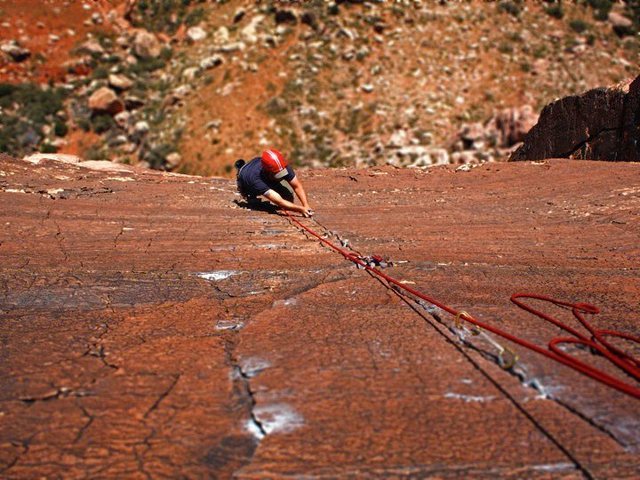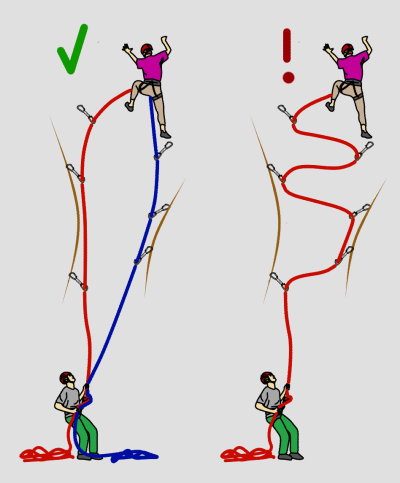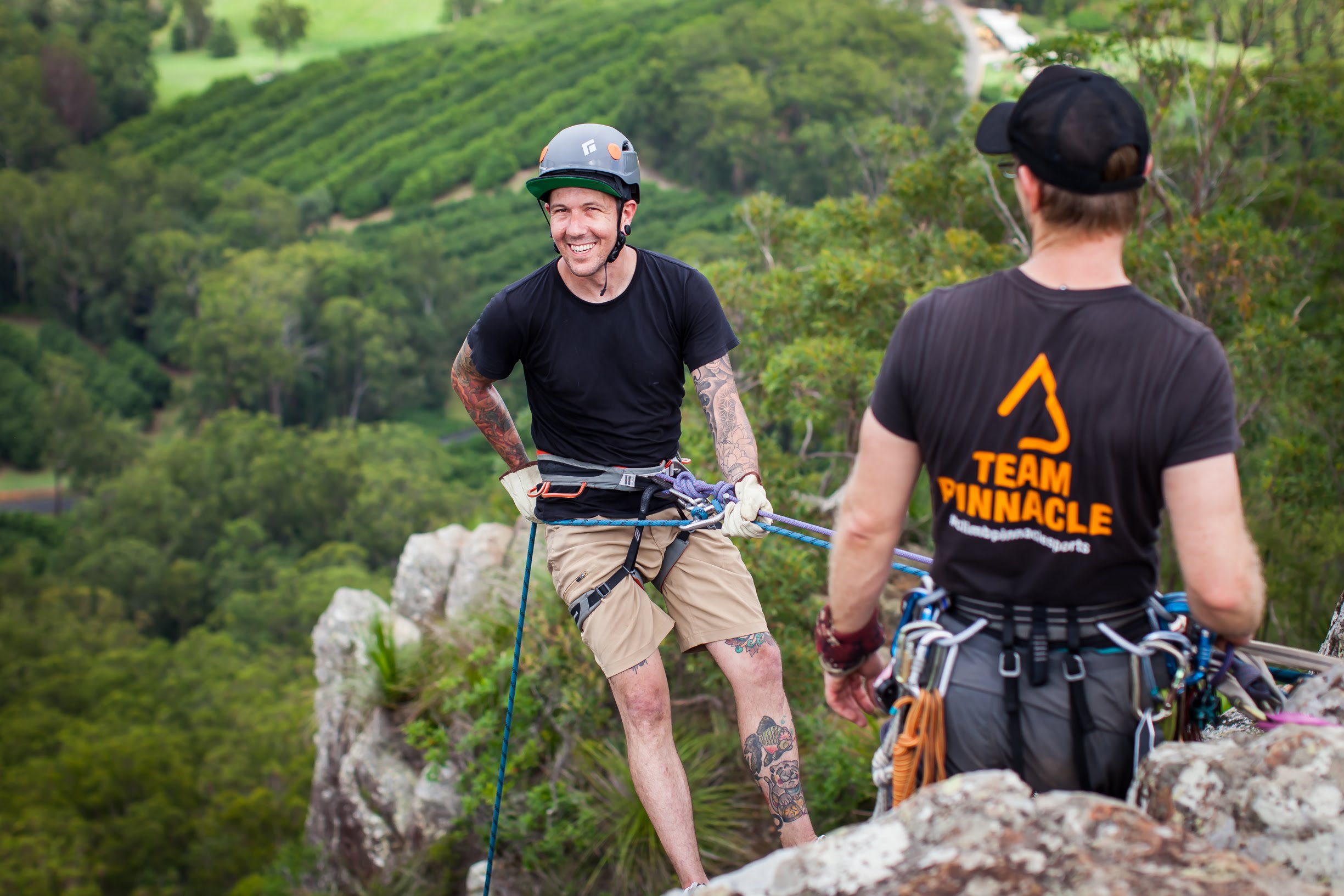Written by Pinnacle Ambassador Ryan Siacci

A few years back, I was heading out to climb a Red Rock Canyon mega-classic named Birdland (150m, 5.7 or roughly 15 Ewbank units, pictured above). Despite having made an alpine start, a party of 6 had beaten me to the climb. This might not have been a problem, except that each climber was belaying the next via single rope in some grotesque imitation of a conga line. I abandoned the route and climbed another, but the party was still high on the wall as I returned to basecamp for après-climb libations.
If you’d rather not be needlessly benighted like this slothful sextet, you might want to consider using Half Ropes. They’re useful as all get-out, but many remain ignorant to the benefits. Do you have a moment to talk about our lord and saviour, the Half Rope?
Faster Belaying
Unlike the hapless party on Birdland, you can make short work of multipitch routes by top belaying two followers at once. Using an ATC Guide or similar tubular belay device with “guide mode”, the two strands can be operated independently. The auto-blocking nature of this set-up means that you can take your hands off one strand to belay the other without fear of imminent death. Handy!
Faster Abseiling
Double the ropes = double the abseil length. Depending on the climb and the length of the pitches, this can cut the time spent on descent by up to half. This is useful for many reasons, not least of which is that incoming weather or impending nightfall might mean you want to get off the hill as fast as possible!
.jpg)
Minimise Rope Drag
Half Ropes are rated to be clipped independently of one another, meaning that you can alternate ropes on wandering pitches. This is especially useful in trad climbing, adventure climbing and ice climbing where protection will often be found at irregular intervals. Using a single rope in such scenarios can be a real heartbreaker, so save yourself the dreaded peril of rope drag with the advent of Half Ropes.

Keep in mind that Half Ropes and Twin Ropes are two different beasts and are rated differently. A more detailed look at the various characteristics of climbing ropes can be found here.
Redundancy
Having a second rope can get you out of many types of pickles. Just say, hypothetically, you put the pick of your ice tool straight through your rope… well, you can carry on to the end of the pitch in relative safety, living to fight another day (or should that read "fighting to live another day"?) But Half Ropes aren’t just for Canadians, because rock fall and sharp edges can damage ropes too. If that’s the case, you can still perform a reasonably quick abseil without having to bypass knots.
.jpg)
The Fine Print
This is a brief overview of the benefits of Half Ropes, not a comprehensive instruction on their use. Although these benefits are rad, there are also challenges and considerations to be made when choosing Half Ropes – belaying a leader is more complicated, placing protection needs more forethought, they are less durable than Single Ropes, and two Half Ropes are often heavier than one Single Rope. Be sure to carefully examine the ratings and uses of any ropes you intend to purchase, and if you’re unsure on the best way to employ them, seek professional instruction.



.jpg)

.jpg)




